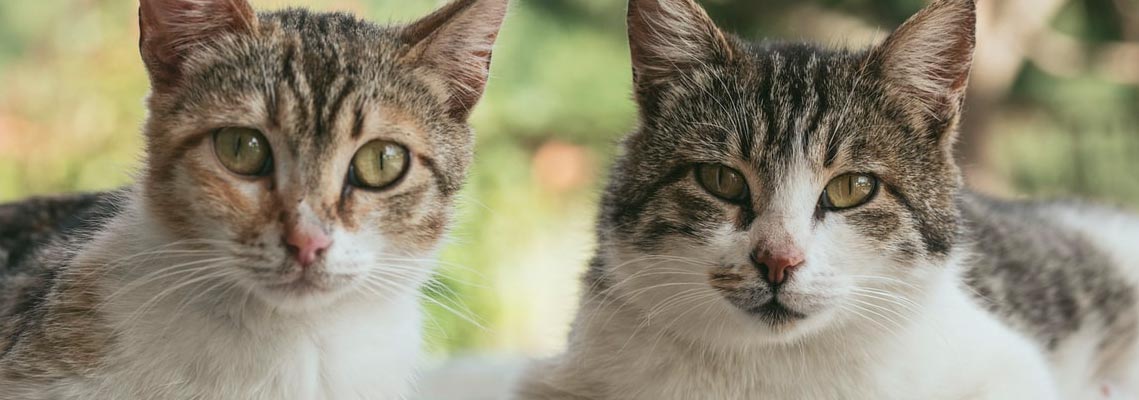
Cat Vaccines Guide
In 1964 in the Omaha Stockyards, a vet named “Doc” had an innovative idea: cattle ranchers could save time, money, and lives by administering their own vaccinations. This visionary idea, and Doc’s pioneering spirit, continue today in Pet Supplies Delivered, the company he started. Doc’s vision lives on with Pet Supplies Delivered putting medical treatment directly in the hands of consumers when they need it and at a lower price.
Pet Supplies Delivered offers:
- Vaccine shipments prepared in a styrofoam cooler with ice packs to protect products from sunlight, extreme heat and cold
- A licensed pharmacy, staffed by licensed pharmacists, giving you the assurance your vaccine and prescription items are handled legally and properly
- Same day shipping on vaccine orders placed before 2:00 p.m. CST on Monday-Thursday
| Shop Vaccines |
Cat Vaccine Schedule
Cat vaccines are low cost and easy to administer. Mail-order vaccines are a perfect solution for owners seeking a cheap vaccine option.
The core FVRCP vaccination is an important part of your cat's routine. It prevents three potentially deadly airborne viruses: rhinotracheitis, calicivirus and panleukopenia.
Generally, the immunity that a kitten has at birth begins to diminish after 9 weeks. It is then time to begin the initial vaccinations, with boosters following every 3-4 weeks until the kitten is 12-16 weeks old. If there is too long an interval between the first vaccination and the booster, your kitten may have to undergo the series all over again.
Cat Vaccine Rabies
Rabies vaccination of cats is the only companion animal vaccine required by law. Rabvac-3 Rabies Vaccine is available for healthy cats. Some states require that rabies vaccines be administered by a licensed veterinarian. In addition, most local laws require the vaccination include a certificate and tag, which are only available through your veterinarian.
Cat Vaccines Cost
Click on the product links for current cat vaccine costs and promotions.
*Core Vaccines
| *Cat Vaccine FVRCP: Feline Rhinotracheitis, Feline Panleukopenia (FPV), Feline Calicivirus (FCV) |
Feline Chlamydophila | |
| Solo-Jec Feline 3 | X | |
| Nobivac Feline 1-HCPCh | X | X |
Vaccine Prevention for Common Cat Diseases
Let's take a look at cat vaccines, letter by letter. We'll look at each letter and the disease it stands for, and then examine some of the most common combinations.
"FVR" stands for feline viral rhinotracheitis.
This disease is an acute disease of the respiratory tract caused by a herpes virus. Cats that are infected with this virus may show sneezing, coughing, salivating, runny and red eyes, tongue ulcers, and congestion of the nose and sinuses. Eye ulcers may develop. Treatment is usually designed to control the symptoms and includes nursing care. Death may result in cats that are dehydrated, refuse to eat, or develop secondary bacterial infections. Because this illness is extremely debilitating and can reoccur throughout the cat's life, all cats that can be vaccinated should receive vaccines to protect against feline viral rhinotracheitis.
"C" stands for calicivirus.
One member of the group of diseases that cause contagious respiratory infections in cats, this virus also causes an acute infection of the respiratory tract and can be difficult to distinguish from feline herpes virus. Signs that may differentiate it from viral rhinotracheitis may include ulcers on the palate and pneumonia. Although often less severe than viral rhinotracheitis, feline calicivirus can lead to death, especially in young kittens. All cats that are able to be vaccinated should receive proper immunization against feline calicivirus.
"P", "FPV", and "FP" stand for feline panleukopenia.
Feline panleukopenia is also called feline "distemper" and feline infectious enteritis. This highly contagious viral disease is caused by a parvovirus and leads to a loss of circulating white blood cells. Signs include rapid, sudden onset of fever, lack of appetite, dehydration, vomiting, diarrhea, and often death. It can infect unborn kittens and lead to death of the newborns. Nursing and supportive care are the only available treatments. Feline panleukopenia vaccine should be included in the vaccinations given to healthy cats.
Chlamydia is not usually abbreviated.
It is the fourth component of the 4-way vaccines. This bacteria-like organism, Chlamydophila felis, is implicated as a cause of respiratory and ocular infections in cats. It can be difficult to differentiate from the herpes virus and calicivirus that also cause feline respiratory infections. It can cause sneezing, congestion, fever, lack of appetite, discharge from the nose, and eye infections. It can be treated with antibiotics. This vaccination may be included with the combination vaccinations designed to help prevent infectious respiratory infections in cats.
FELV, FeLV, LVK, and LV-K stand for feline leukemia virus.
Feline leukemia is caused by a virus that replicates in the cat's body and attacks the immune system. It can cause many illnesses, including anemia, cancer, and multiple infections secondary to the loss of immune function. Cats with feline leukemia may be depressed, lose their appetites, lose weight, run fevers, have vomiting and diarrhea, and show many other disease signs. Infected cats that show disease symptoms eventually die from this illness. Cats with potential exposure to the feline leukemia virus should receive proper immunizations to help prevent infection.
Cat Combination Vaccines
Cat vaccinations also come in combinations designed to meet the needs of different cats. They are manufactured by several manufacturers, so similar products may be available from different producers. Letters and numbers are also used to identify the different combinations of vaccines available for cats.
3-Way, 3, or any other title with a 3 in it, typically refers to a vaccine that contains FVRCP, which are feline viral rhinotracheitis, calicivirus, and feline panleukopenia vaccines.
4-Way, 4, or any other title with a 4 in it, typically refers to a vaccine that contains FVRCP plus Chlamydia, which means that the vaccine contains components to protect against feline viral rhinotracheitis, calicivirus, feline panleukopenia, and chlamydia infection.
Updated August 18, 2020









